Building Trust

“Each employee at getAbstract has a different rhythm, and those who can accommodate individual circumstances are the ones who can reach their full potential. Therefore, confidence in their abilities and practical and financial support to give them the hybrid work structure they need to reach their full potential are the number one productivity tools at getAbstract,” explains getAbstract CEO Thomas Bergen. And he adds:
Without trust and the resources it activates among my employees, even the best and most comprehensive digital gadgets are useless.
Thomas Bergen, CEO getAbstract
One might rub one’s eyes in amazement, but it is true: Hardly any other topic currently occupies leaders and managers more than the topic of trust. If you add related topic search queries such as empathy, coaching or agility, you’ll find it has dominated the leadership topics for weeks now. This is particularly exciting because until recently, managers who thought about such topics were laughed at by their colleagues: “Leading means taking action!” or “Trust is good, supervision is better!” the tough dogs shouted at them. But now those same watchdogs are eating their words:
In hybrid work situations, the micromanager, who was already on trial before the pandemic, no longer has any means of constant control, and the controlled – in terms of working conditions – are in the driver’s seat.
Those who do not invest in good relationships have no chance of retaining their best people. If you fail to do so in the current tight labor market, you won’t be occupying a manager’s chair tomorrow. If you want to prevent this, follow our tips below.
Conversely, if you have always gone the extra mile in gaining trust, you can save yourself the following crash course. The bonds between a trustworthy boss and his or her colleagues are tight, disappointments are minimized and forgiven, and the work climate is more optimistic and psychologically secure than elsewhere. This means that two of the three main requirements of talented employees for a good, valued workplace are met (trust has no direct influence on salary).
1. What Is All the Fuss About Trust?
Still, a huge number of managers think the subject of trust is more about law or sociology. Yet, Professor Benjamin Ho – author of Why Trust Matters – proves that looking at economic issues through the perspective of trust is both informative and thought-provoking.
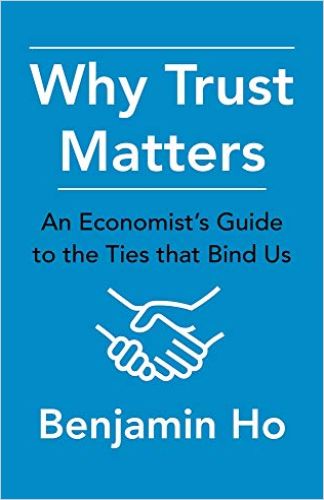
Much of economic study tends to focus on theoretical efficiency, but Ho’s emphasis on trust, in contrast, offers a more rounded, real-world view. His commentary is illuminating and useful for anyone concerned about the destructive levels of mistrust so prevalent in contemporary society.
Take-Aways
- The ability to trust strangers is the mark of a successful developed economy.
- Throughout history, institutions were created to build trust.
- Companies, jobs, brands and online platforms all confront trust issues.
- Learn more…
In a large organization with a broad diffusion of responsibility, it is tempting and easy for one individual to free-ride on the efforts of others, not putting in any effort themselves…Therefore, corporations adopt rituals and stories to inculcate norms and expectations.
Benjamin Ho
Trust, as Stephen M.R. Covey writes in The Speed of Trust, a more management-centered classic on the topic, is necessary to the credibility – and, therefore, the empowerment – of any organization, economy or human relationship. People who work in an atmosphere of trust can collaborate productively, so things get done faster and at lower cost.
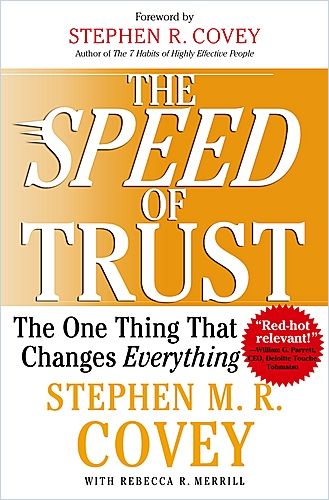
Without trust, however, business slows down and costs rise. When trust is absent, people keep trying to protect themselves against those whom they cannot trust. They insist on getting everything in writing because they cannot believe what people say and they engage in other steps whose only function is to compensate for lack of trust. The absence of trust is like a tax on a business. The presence of trust is like a dividend.
Take-Aways
- Trust is universally necessary and productive.
- Distrust is costly to businesses, like a burdensome surtax.
- Low-trust organizations tend to be bureaucratic and political.
- High-trust organizations tend to be collaborative, innovative, creative and effective.
- The “Four Cores of Credibility” are integrity, intent, capability and results.
- Learn more…
Contrary to what most people believe, trust is not some soft, illusive quality that you either have or you don’t; rather, trust is a pragmatic, tangible, actionable asset that you can create – much faster than you probably think possible.
Stephen M.R. Covey
2. How to Gain Trust
At the beginning of every interpersonal relationship, there is already a certain trust – and it can grow from there. Four objective qualities can identify people or organizations as being worthy of trust, says Oxford lecturer Rachel Botsman in The Currency of Trust:
- Competence.
- Consistency.
- Empathy.
- Lack of hypocrisy (how well people’s actions match their words).

Our trust in people grows when we do not have bad experiences with them, based on the four qualities above. Yet, a relationship of trust does not come about in minutes or hours. What foundation is laid in these time spans is only the start of it – consolidating it usually takes months. Focus on the following few goals, and let them guide you if you want to gain trust:
Everyone Makes Mistakes (Including You)
Bosses are role models. And that’s why they have a very special function: They should prove that making mistakes is not a disgrace, as long as you learn from them. So admit mistakes, use them to improve things based on them, and let your colleagues share in your learning successes!
As a leader, making the first move to offer trust is your job.
Communicate More
Nothing builds and maintains trust like talking to each other regularly and openly. This is even more true in hybrid teams, whose members don’t (or rarely) meet “just like that” in the stairwell or have lunch together. As a supervisor: Check in with your people, at best in weekly short meetings, where it is not exclusively about goals and tasks.
Do What You Say You’re Going to Do
Communicating more doesn’t mean you have to pretend or tell fairy tales. Say what you mean, believe and feel. And do what you say. Your efforts to establish and build trust will disintegrate if you break your promises. In every culture and belief system, people’s perceived trustworthiness depends on being able to count on them to follow through on their word.
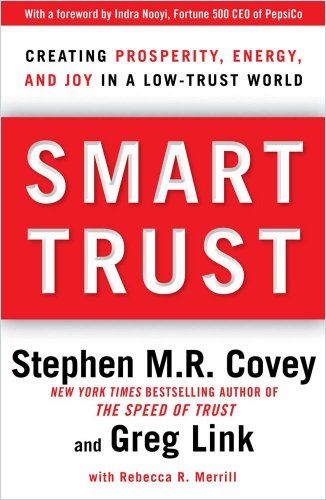
Avoid “overpromising and underdelivering, being casual in keeping commitments…and delivering activities instead of results,” as Stephen M.R. Covey puts it in Smart Trust.
Be Authentic, Honest and Transparent
On the job, you can’t always say everything. Some bosses know about company secrets that not every employee needs to know – and some colleagues can be annoying. But before you lie or talk badly about others, it’s better to keep quiet. Or be honest and say, “I can’t talk about that. Not yet.” When you talk, explain intentions and circumstances so people can follow. Get them on board so they can engage. Don’t try to pretend – people notice.
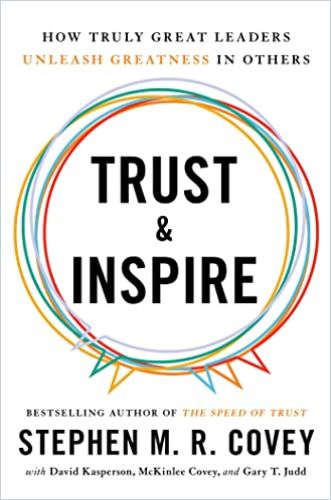
Leading with trust means having confidence in the people around you and helping them grow. When you show the people you lead that you trust them, they will reciprocate. Your faith in your employees will encourage them to rise to the challenges of their work to demonstrate that they merit your trust.
Leaders who want to be trustworthy and inspiring think and behave differently than command-and-control leaders.
They believe in their people’s potential, capacity and growth. Make this belief your basic principle and make sure that you don’t lose tact, timing and decorum in the process.
3. How Do I Maintain Trust?
By heeding the above advice not just to gain trust with anyone, but always acting on the maxims behind it.
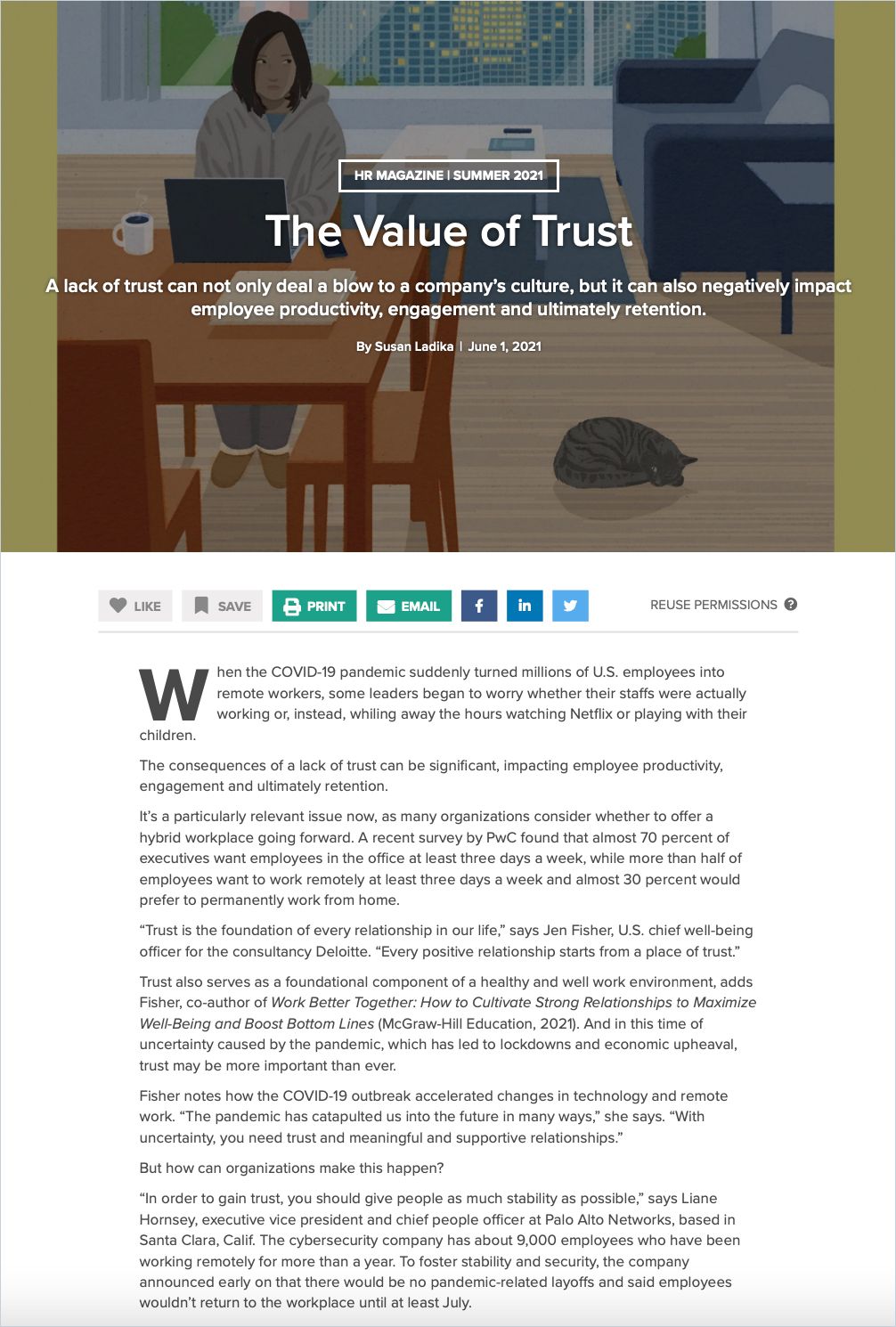
Here are a few concrete examples of trust-maintaining (and trust-boosting) behavior:
- Demonstrate respect to all your peers, and know that little things (like forgetting someone’s name) matter greatly.
- Invite colleagues to make decisions as well because it’s not only fair but proves that you are willing to be a true team player.
- Foster an open and fear-free culture to give others the opportunity to stand up to their authentic values as well.
- Demonstrate openness to suggestions and dissenting opinions, and drive a culture of criticism that is constructive. This will transform mistakes into learning processes and reward creativity.
- Show interest in employees and their professional and personal problems. This way, you share things that you don’t discuss with everyone – which takes relationships to a higher level.
- Be generous in sharing knowledge and valuable information. Those who sow trust will reap trust.
- Do fair, regular and transparent performance appraisals (and set up appropriate payment and reward systems).
You do not believe us? Then maybe you believe these thought leaders on trust:
4. How Do I Regain Trust If It Has Been Abused?
First, what does a trust breach look like? For example, it is a breach of trust when a supervisor delegates a job to an employee but does not give the employee the authority necessary to perform it satisfactorily. Minor intentional breaches of trust include gossiping and taking credit for other people’s work.
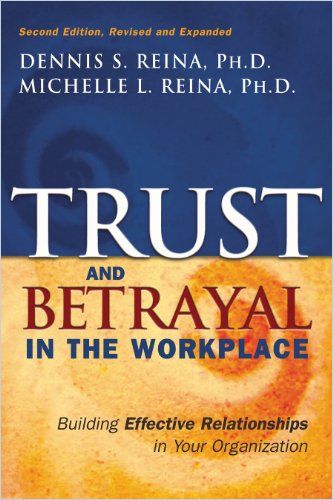
However, the whole thing can also take on dramatic proportions if, for example, a confidant switches to the competition, divulges company secrets or harms you in some other way. The more serious offenses may be unforgivable, but the more frequent minor quibbles are not – they are what we want to focus on here:
Dealing with an Abuse of Trust
If trust has been abused, months and years of trust-building are invalidated in one fell swoop, or at least somewhat spoiled. When there is a trust violation, we feel betrayed. And after a betrayal, a healing process must take place in order to perceive what has happened, to process the pain, to be helped and to learn to forgive.
Take these steps to restore trust:
- Acknowledge and accept what has happened.
- Allow all the painful feelings.
- Reconsider the experience and think of it as a learning process.
- Take responsibility – put your part in what happened openly on the table.
- After some time has passed, address the breach of trust with the person involved. As a matter of principle, it is then advisable to talk about it instead of bottling up the frustration.
- Forgive yourself and the other people involved.
- Let go and move on – consider how you can act differently in the future.
Self-Reflection Is Crucial
Remember that trust is also a decision. We ourselves bear the responsibility for this decision, and not the other person. If we are disappointed because our expectations are not met, we are always partly responsible for the consequences. Anger, annoyance, discord and insecurities are therefore also always partly on our account. To deal more thoughtfully with the gift of trust, internalize this. It’s the best prevention against disappointments and injuries.
Discover the Magic of Conflict
The good news, though, is: Trust grows in the case of conflict. It grows especially through clarity in positioning and showing the will to solve the conflict together:
- If your trust has been betrayed as a leader, don’t make the person feel like you’re dropping them because of it. Talk about it, about how to avoid it in the future – and be lenient.
- If you act shabbily toward someone, you must accept the obligation to set the situation straight. To repair your reputation and regain people’s confidence, make and, more importantly, keep small commitments.
- No matter which side you are on, be sure that you act judiciously, since precipitous action exacerbates a difficult situation.
- Take a clear position, stay predictable and accountable.
- Watch trust on both sides grow again out of clarity.
And last but not least: Even the very smallest breaches of trust can add up to disasters that negatively impact you, your people and your company. Here’s how to prevent that:











